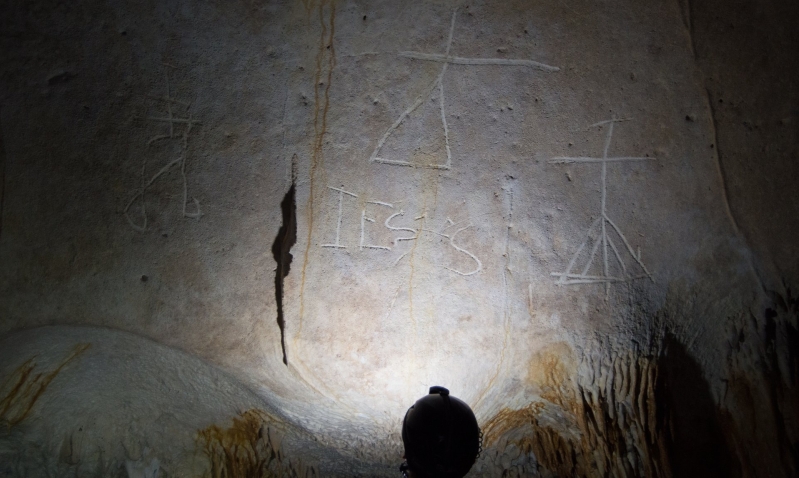
Archaeologists have discovered 16th-century Christian symbols left by explorers alongside ancient indigenous art in the Caribbean, shedding new light on early religious dialogue between Europeans and Native Americans.
According to a report from the University of Leicester, a team led by the school and the British Museum discovered Latin inscriptions and Christograms next to spiritual iconography left by indigenous peoples in a cave deep inside the remote island of Mona.
"It is truly extraordinary," said Jago Cooper, the British Museum curator who, with the University of Leicester's Alice Sampson, led the research team. "It is proof that the first generation of Europeans were going into caves and being exposed to an indigenous worldview. I can't think of another site like this in the Americas."
Over 30 European marks were found on the cave walls, located 40 miles west of Puerto Rico. The markings are slightly higher above the ground than the indigenous symbols, in the places where they are near each other.
The phrase "God made many things," appears one spot in the cave, and in another place, the words "may God forgive you" appear. The Bible verse "And the Word was made flesh [and dwelt among us]" is also inscribed in Latin alongside letters used as an abbreviation for Jesus Christ. In a separate chamber is one of two representations of Calvary, comprised of three crosses.
The marks are believed to have been made by some of the earliest colonizers to arrive in the Americas, who would have been taken to the caves, where they respectfully engaged in religious dialogue with indigenous peoples.
"We have this idea of when the first Europeans came to the New World of them imposing a very rigid Christianity," said Samson. "We know a lot about the inquisition in Mexico and Peru and the burning of libraries and the persecution of indigenous religions.
"What we are seeing in this Caribbean cave is something different. This is not zealous missionaries coming with their burning crosses, they are people engaging with a new spiritual realm and we get individual responses in the cave and it is not automatically erasure, it is engagement."
She added, "This not only provides a counterpoint to official metropolitan histories but also tracks the beginnings of new religious engagements and transforming cultural identities in the Americas."
The Guardian notes that since 2013, the Anglo-Puerto Rican team have been exploring about 70 cave systems on the uninhabited island, which was first visited and claimed for Spain by Christopher Columbus on his second voyage in 1494.
"This research reveals a new perspective on the personal encounter between indigenous populations and the first generations of Europeans in the Americas," Cooper said in a statement.
"This is a unique site that helps us to understand the origins of cultural identity in the Americas, the start of a process that continues right up to the modern day."







